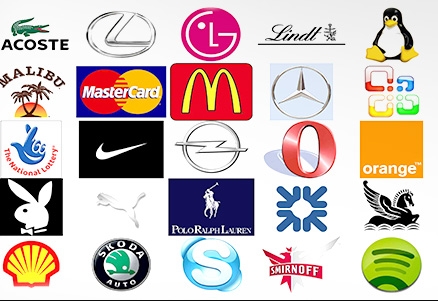Raceway signage plays a crucial role in ensuring the safety and efficiency of motorsports events. It provides essential information to drivers, officials, and spectators, guiding them through the track layout, indicating potential hazards, and conveying important regulations.
The Future of Raceway Signage: Digital and Interactive Solutions
**The Future of Raceway Signage: Digital and Interactive Solutions**
The world of raceway signage is undergoing a transformative evolution, driven by the advent of digital and interactive technologies. These advancements are revolutionizing the way information is conveyed to spectators, enhancing their overall race-day experience.
Digital signage, with its vibrant displays and dynamic content, offers a captivating platform for raceway operators. Real-time updates on race standings, driver profiles, and track conditions can be seamlessly displayed, keeping spectators informed and engaged throughout the event. Moreover, digital signage can be customized to cater to specific demographics, providing targeted messaging and tailored content.
Interactive signage takes the spectator experience to the next level. Touchscreens and augmented reality (AR) applications allow fans to interact with the signage, accessing additional information, viewing replays, and even placing bets. This interactive element fosters a deeper connection between spectators and the raceway, creating a more immersive and memorable experience.
Beyond enhancing the spectator experience, digital and interactive signage also offers significant benefits for raceway operators. The ability to remotely manage and update signage content reduces operational costs and allows for real-time adjustments to accommodate changing conditions. Additionally, data analytics gathered from interactive signage can provide valuable insights into spectator behavior, enabling raceway operators to optimize their marketing and promotional strategies.
The integration of digital and interactive signage into raceways is not without its challenges. Ensuring reliable connectivity and maintaining the integrity of the signage systems is crucial. However, the potential benefits far outweigh the challenges, as these technologies have the power to transform raceway signage into a dynamic and engaging platform that enhances the spectator experience and drives revenue for raceway operators.
As the future of raceway signage unfolds, we can expect to see continued innovation and advancements in digital and interactive technologies. The integration of artificial intelligence (AI) and machine learning (ML) will further enhance the capabilities of signage systems, providing personalized content and predictive analytics. The result will be a raceway signage experience that is both immersive and informative, creating a truly unforgettable race-day experience for spectators.
Best Practices for Installing and Maintaining Raceway Signage
**Best Practices for Installing and Maintaining Raceway Signage**
Raceway signage plays a crucial role in ensuring the safety and efficiency of electrical installations. Proper installation and maintenance are essential to maximize the effectiveness of these signs.
**Installation Considerations:**
* **Location:** Signs should be placed in conspicuous locations where they can be easily seen by personnel. Consider the height, angle, and distance from potential hazards.
* **Visibility:** Ensure that signs are visible from all angles and under various lighting conditions. Use reflective materials or illumination to enhance visibility.
* **Durability:** Choose signs made of durable materials that can withstand harsh environments, such as extreme temperatures, moisture, and chemicals.
* **Mounting:** Secure signs firmly using appropriate fasteners. Avoid using adhesives or tape that may deteriorate over time.
**Maintenance Best Practices:**
* **Regular Inspections:** Conduct regular inspections to identify any damage, fading, or missing signs.
* **Cleaning:** Clean signs periodically to remove dirt, debris, or graffiti that may impair visibility.
* **Repairs:** Promptly repair or replace damaged signs to maintain their effectiveness.
* **Updates:** Keep signs up-to-date with any changes in regulations or safety protocols.
**Additional Considerations:**
* **Standardization:** Use standardized signage throughout the facility to ensure consistency and clarity.
* **Training:** Train personnel on the importance of signage and how to report any issues.
* **Documentation:** Maintain records of signage installation, maintenance, and inspections for compliance purposes.
**Benefits of Proper Signage:**
* **Enhanced Safety:** Clear and visible signage helps prevent accidents by warning personnel of potential hazards.
* **Improved Efficiency:** Proper signage guides personnel through the facility, reducing confusion and downtime.
* **Compliance:** Adhering to signage standards ensures compliance with safety regulations and industry best practices.
* **Cost Savings:** Regular maintenance and timely repairs prevent costly accidents and downtime.
By following these best practices, organizations can ensure that their raceway signage is effective in protecting personnel, improving efficiency, and maintaining compliance. Regular inspections, proper maintenance, and ongoing updates are essential to maximize the benefits of these critical safety devices.
Innovative Raceway Signage Solutions for Modern Facilities
**Innovative Raceway Signage Solutions for Modern Facilities**
In today’s fast-paced and technologically advanced world, effective signage is crucial for ensuring the smooth operation and safety of modern facilities. Raceway signage, in particular, plays a vital role in guiding individuals through complex environments, providing essential information, and enhancing the overall user experience.
Traditional raceway signage often falls short in meeting the demands of modern facilities. Static signs can become outdated quickly, requiring costly replacements. Moreover, they lack the flexibility to adapt to changing needs or accommodate multiple languages.
Innovative raceway signage solutions address these challenges by leveraging advanced technologies and materials. Digital signage, for instance, allows for real-time updates, remote management, and the display of dynamic content. This eliminates the need for physical sign changes and ensures that information is always current and accurate.
Another innovative solution is modular signage. These systems consist of interchangeable components that can be easily assembled and reconfigured to meet specific requirements. This flexibility enables facilities to adapt their signage to changing layouts, accommodate different languages, or create custom configurations.
In addition to digital and modular signage, advancements in materials have also enhanced the durability and aesthetics of raceway signage. Durable materials, such as polycarbonate and aluminum, withstand harsh conditions and resist fading or damage. They also provide a sleek and modern appearance that complements the design of contemporary facilities.
Furthermore, innovative raceway signage solutions incorporate accessibility features to cater to individuals with disabilities. Braille and tactile signage, for example, provide tactile cues for visually impaired individuals. Additionally, high-contrast colors and clear fonts ensure readability for those with low vision.
By embracing these innovative solutions, facilities can enhance the effectiveness of their raceway signage. Digital signage provides real-time information and flexibility, while modular signage allows for customization and adaptability. Durable materials ensure longevity and aesthetics, and accessibility features promote inclusivity.
In conclusion, innovative raceway signage solutions are essential for modern facilities. They provide real-time information, flexibility, durability, and accessibility, enhancing the user experience and ensuring the smooth operation of complex environments. By embracing these advancements, facilities can create effective and efficient signage systems that meet the demands of today’s dynamic and interconnected world.
The Role of Raceway Signage in Safety and Compliance
**Raceway Signage: A Vital Component for Safety and Compliance**
Raceway signage plays a crucial role in ensuring the safety and compliance of electrical installations. These signs provide essential information to electricians, maintenance personnel, and emergency responders, enabling them to navigate and operate electrical systems effectively.
One of the primary functions of raceway signage is to identify the contents of raceways. This information is vital for troubleshooting electrical faults, as it allows technicians to quickly locate and isolate the affected circuit. Additionally, raceway signage helps prevent accidental contact with live wires, reducing the risk of electrical shock and injury.
Compliance with electrical codes and standards is another critical aspect of raceway signage. These signs must meet specific requirements regarding size, color, and content to ensure they are easily visible and understandable. By adhering to these standards, raceway signage helps facilities maintain compliance with regulatory bodies and avoid potential fines or penalties.
Furthermore, raceway signage serves as a valuable tool for emergency responders. In the event of a fire or other emergency, these signs can guide firefighters and other personnel to the location of electrical equipment, enabling them to quickly shut off power and prevent further damage.
The effectiveness of raceway signage depends on its proper placement and maintenance. Signs should be installed at regular intervals along raceways and at all points of entry and exit. They should also be kept clean and free of obstructions to ensure visibility.
In addition to the safety and compliance benefits, raceway signage can also enhance the aesthetics of electrical installations. By using high-quality materials and attractive designs, raceway signage can complement the overall appearance of a facility.
In conclusion, raceway signage is an essential component of electrical installations, providing vital information for safety, compliance, and emergency response. By adhering to electrical codes and standards, and ensuring proper placement and maintenance, raceway signage can help prevent accidents, facilitate troubleshooting, and enhance the overall functionality of electrical systems.
How to Design Raceway Signage for Maximum Visibility
**Raceway Signage: Designing for Maximum Visibility**
Raceway signage plays a crucial role in ensuring the safety and efficiency of motorsports events. Effective signage provides clear and concise information to drivers, spectators, and officials, enhancing the overall experience. Here are some key considerations for designing raceway signage for maximum visibility:
**Color and Contrast:**
Choose colors that contrast sharply with the background to enhance visibility. Bright colors like yellow, orange, and red are highly effective, especially against dark backgrounds. Avoid using similar colors that may blend together and create confusion.
**Font and Size:**
Select a font that is easy to read from a distance. Sans-serif fonts, such as Arial or Helvetica, are recommended for their clarity. Use large font sizes to ensure visibility from various vantage points.
**Message Clarity:**
Keep messages brief and to the point. Avoid using jargon or technical terms that may not be understood by all viewers. Use clear and concise language that conveys the intended message effectively.
**Placement and Visibility:**
Position signs in highly visible locations where they can be easily seen by drivers and spectators. Consider the viewing angles and potential obstructions to ensure optimal visibility. Use multiple signs if necessary to provide redundancy and reinforce important messages.
**Illumination:**
For night races or low-light conditions, consider using illuminated signs. LED or fluorescent lighting can enhance visibility and ensure that signs are visible even in darkness.
**Durability and Weather Resistance:**
Raceway signage is exposed to harsh weather conditions, including rain, wind, and sunlight. Choose materials that are durable and weather-resistant to ensure longevity and maintain visibility over time.
**Consistency and Standardization:**
Establish a consistent signage system throughout the raceway. Use similar colors, fonts, and message formats to create a cohesive and recognizable visual language. This consistency helps drivers and spectators quickly identify and understand the information provided.
**Additional Considerations:**
* **Use symbols and graphics:** Incorporate symbols and graphics to enhance message comprehension and reduce language barriers.
* **Consider the viewing distance:** Determine the typical viewing distance and adjust the font size and message length accordingly.
* **Test and evaluate:** Conduct visibility tests to ensure that signs are effective from various angles and distances. Make adjustments as needed to optimize visibility.
By following these guidelines, raceway designers can create signage that effectively communicates important information, enhances safety, and improves the overall experience for all participants and spectators.
The Importance of Clear and Concise Raceway Signage
**The Importance of Clear and Concise Raceway Signage**
In the realm of motorsports, raceway signage plays a crucial role in ensuring the safety and efficiency of events. Clear and concise signage provides vital information to drivers, spectators, and race officials, enabling them to navigate the track and make informed decisions.
Effective raceway signage begins with a comprehensive plan that considers the layout of the track, the types of races being held, and the potential hazards. Signs should be strategically placed at key locations, such as the start/finish line, pit lane entrances, and areas with potential obstacles.
The content of raceway signage should be concise and easy to understand. Drivers need to be able to quickly identify and interpret signs while maintaining focus on the track. Essential information includes lap times, race positions, caution flags, and track conditions.
Color coding is a powerful tool for enhancing the visibility and comprehension of raceway signage. Different colors can be assigned to different types of signs, such as green for safe conditions, yellow for caution, and red for danger. This color-coding system allows drivers and spectators to quickly identify the severity of a situation.
In addition to providing information, raceway signage also serves as a means of communication between race officials and participants. Signs can be used to convey instructions, such as “Slow Down” or “Enter Pit Lane,” and to provide updates on race conditions.
The use of digital signage is becoming increasingly common at raceways. Digital signs offer the advantage of being able to display real-time information, such as lap times and race positions. They can also be used to display videos and other visual aids to enhance the spectator experience.
However, it is important to ensure that digital signage does not become a distraction for drivers. Signs should be placed in locations where they will not interfere with the driver’s line of sight or create glare.
Clear and concise raceway signage is essential for the safety and efficiency of motorsports events. By providing vital information to drivers, spectators, and race officials, signage helps to ensure that everyone involved can make informed decisions and navigate the track safely.
Q&A
**Question 1:** What is the purpose of raceway signage?
**Answer:** To identify and provide information about raceways, including their location, size, and capacity.
**Question 2:** What are the different types of raceway signage?
**Answer:** Warning signs, directional signs, informational signs, and identification signs.
**Question 3:** What materials are used for raceway signage?
**Answer:** Typically metal, plastic, or fiberglass.
**Question 4:** What colors are used for raceway signage?
**Answer:** Yellow, orange, red, blue, green, and white.
**Question 5:** Where are raceway signs typically placed?
**Answer:** On or near raceways, at entrances and exits, and at intersections.
**Question 6:** What are the requirements for raceway signage?
**Answer:** They must be visible, legible, and compliant with applicable codes and standards.
Zaključak
**Conclusion:**
Raceway signage plays a crucial role in ensuring the safety and efficiency of motorsports events. By providing clear and concise information, signage helps drivers navigate the track, spectators understand the rules and regulations, and officials manage the event effectively. Effective signage systems contribute to a positive and enjoyable experience for all participants and attendees.





Leave A Comment